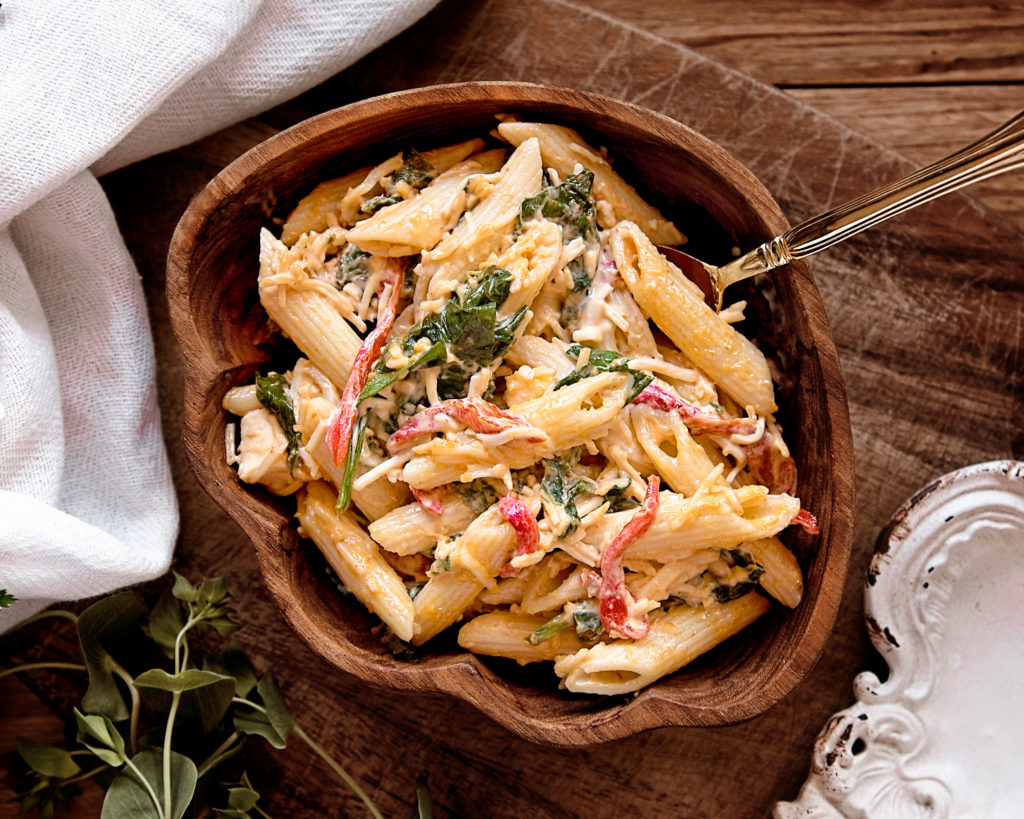
If you’re a pasta and potato lover like me, but hate what those starches do to your waistline, here’s good news about carbs.
There are certain carbohydrate foods that can actually help you keep the pounds off. The secret is in choosing the right carbs and preparing them the right ways.
All this information is backed by scientific research, so you don’t have to take my word for it. Besides being able to indulge your taste buds, you’ll be helping your immune system, brain function, sugar metabolism, digestive system, and even resist cancer.
What is Resistant Starch?
Resistant starch is a carbohydrate food that is not digested by the small intestine. The small intestine is where the enzymes produced by the liver, pancreas and gall bladder digest everything we eat. When a food is not digested in the small intestine, it passes through to the large intestine.
After resisting digestion in the small intestine, resistant starches go into the large intestine or colon and provide food for the beneficial bacteria living there. These foods are called prebiotics–stuff that provides nourishment for probiotic bacteria that is so necessary for health.
Why Should You Eat Resistant Starches?
So, what’s the benefit of eating food that isn’t digested? For one thing, if you want to lose weight but hate to starve yourself on a very low calorie diet, you can eat these tasty foods, feel full, and still lower your caloric intake. If you’re at a healthy weight, but want to lose extra body or visceral fat, resistant starch foods help shed the fat without losing weight. https://resistantstarchresearch.com/health-benefits/the-metabolism-of-weight/
Feeding your large intestine microbiota—all those tens of trillions of tiny microorganisms—can increase the mucous layer of the colon, making the colon healthy. Resistant starch converts into the beneficial short-chain fatty chain acid butyrate, which can suppress cancer growth and decrease IBS (irritable bowel syndrome) symptoms.
Many Americans are either insulin resistant or on their way to this pre-diabetes condition. Eating resistant starches is a proven way to increase insulin sensitivity, which reverses the pancreatic overload that our normal American diets create. https://resistantstarchresearch.com/health%20benefits/blood-sugar-benefits/
Research shows that eating a healthy amount of resistant starch can lower the incidence of breast cancer. http://journal.waocp.org/article_31064_521d941c4a3f5fc380cd6513b9bfaf89.pdf
There’s even early research that suggests that eating resistant starch can help with the muscle and weight loss that the elderly face. Eating resistant starch food can moderate the appetite loss that many older people experience. https://resistantstarchresearch.com/posts/potential-anti-aging-benefits/
What Foods Contain Resistant Starch?
Some foods, such as raw potatoes and oats, are naturally full of resistant starch (RS). When these foods are cooked—the way I like to eat them—the amount of resistant starch is reduced. My mother never let me eat raw potatoes when we were chopping them for recipes. I think it was because of some type of pathogen found in potatoes in the 50s. Eating raw potatoes can also result in bloating due to the indigestibility. If you want to eat raw potatoes to increase your resistant starch, start slowly to avoid possible anti-nutrients such as lectin. Don’t eat green potatoes because they contain toxic compounds that are formed when potatoes are exposed to sunlight. https://www.healthline.com/nutrition/raw-potatoes#vitamin-c
Raw potato starch is available to increase your resistant starch intake. To get the highest percentage of resistant starch, do not heat the raw potato starch powder. Instead, use it in room temperature water or a cold smoothie. It can be used in place of flour or cornstarch in sauces, but heating adds calories and negates the resistant starch properties. Since commercially grown potatoes contain so many chemicals, always buy organic raw potato starch.
Raw whole grains contain RS. One way to eat oats raw is to prepare overnight oats. Simply mix equal parts liquid and rolled oats. Refrigerate in a jar eight hours or overnight, and you’ll have an instant breakfast. You can add fruit, honey, pure maple syrup or spice when you first combine it, or add nuts or fruit when serving to preserve their texture. If you like it creamier, add more milk when you eat it. Muesli is another source of raw oats.
Raw whole grains, legumes and beans, green bananas are all sources of resistant starch. It’s interesting to note that ¼ cup of uncooked rolled oats contains 4.4 grams of RS, while a cup of cooked rolled oats (1/2 cup uncooked) has .5 gram.
The beneficial level of dietary resistant starch is 20 grams per day. You can find the amount of RS in common foods here: https://resistantstarchresearch.com/posts/rs-in-foods/
How Carbs Become Resistant Starches
Raw potatoes are mostly resistant starches (RS). When we cook them, those properties are reduced. If you cool the cooked potatoes overnight, as you would when making potato salad, the resistant starch properties come back.
In research on rice, it was discovered that cooking a half cup of rice with one teaspoon of coconut oil and chilling it for 12 hours transformed the rice starch to resistant starch. Even if you reheat the rice, the resistant starch properties remain. https://www.acs.org/content/acs/en/pressroom/newsreleases/2015/march/new-low-calorie-rice-could-help-cut-rising-obesity-rates.html
When you cook pasta and cool it for a pasta salad, you have the advantage of low calorie resistant starch pasta. Just be sure to use healthy additions to your pasta salad, so you don’t negate the low calorie benefits.
Eat Your Carbs and Lose Weight Too
There it is—a reason to eat potato salad made with the most wholesome whole food organic ingredients. So add some cooked or canned red kidney beans to your pasta salad to feed your gut and enjoy guilt free eating!
How do you prepare your carbs to increase the levels of resistant starches?
